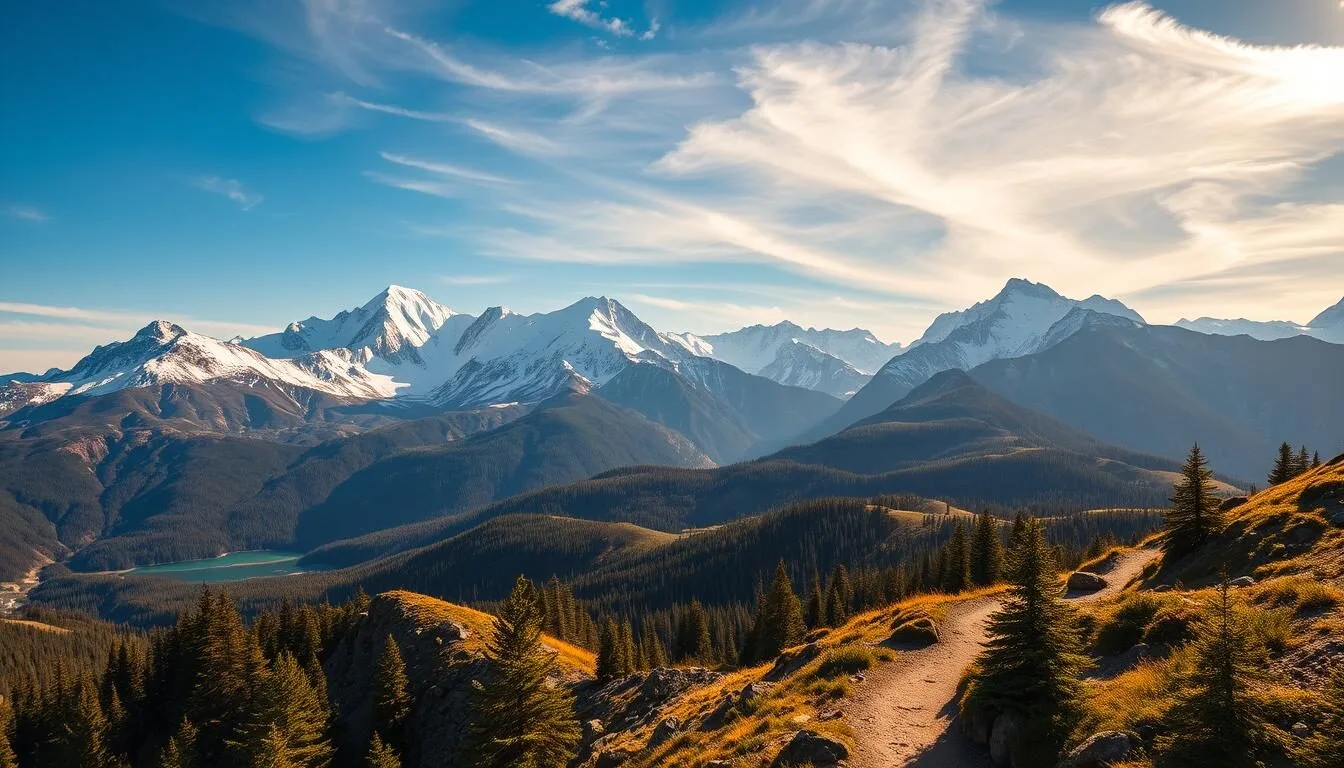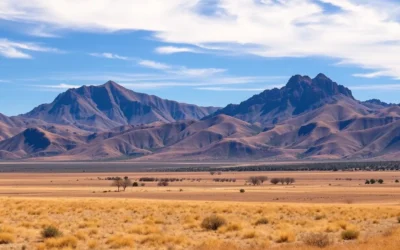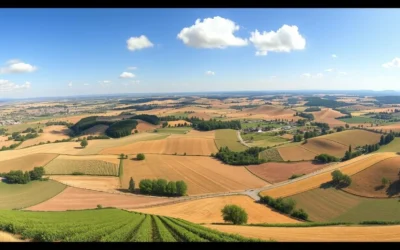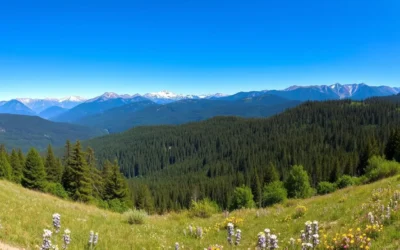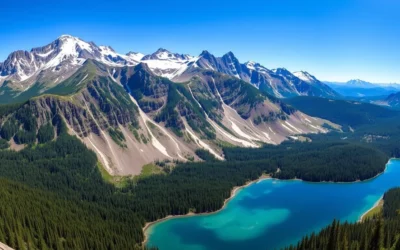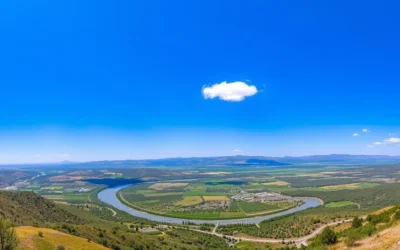You might be surprised to know that just beyond the Sierra Nevada lies a lesser-known mountain range that offers some of the most unique experiences in California. The White Mountains rise abruptly from Owens Valley, reaching elevations over 14,000 feet, creating a desert alpine ecosystem that’s both fascinating and beautiful.
This range is home to the Ancient Bristlecone Pines, some of the oldest living things on Earth, and offers a range of adventures for those willing to explore. Despite being as tall as the Rockies, Sierras, and Cascades, these mountains remain relatively unknown to most Americans, adding to their allure and wilderness experience.
In this article, we’ll guide you through the top activities and experiences to enjoy in this remarkable California destination.
Discovering the White Mountains of California
As you explore the White Mountains of California, you’ll discover a mountain range like no other, with its own distinct ecosystem. Located in the eastern part of the state, this range is characterized by its rugged terrain and extreme elevations.
Location and Geography
The White Mountains are situated in a unique geographical location, where the Sierra Nevada rainshadow effect has created a desert alpine ecosystem. This combination of factors supports a variety of hardy flora and fauna that have adapted to the harsh conditions. The range is home to some of the highest peaks in the state, including White Mountain Peak, which exceeds 14,000 feet.
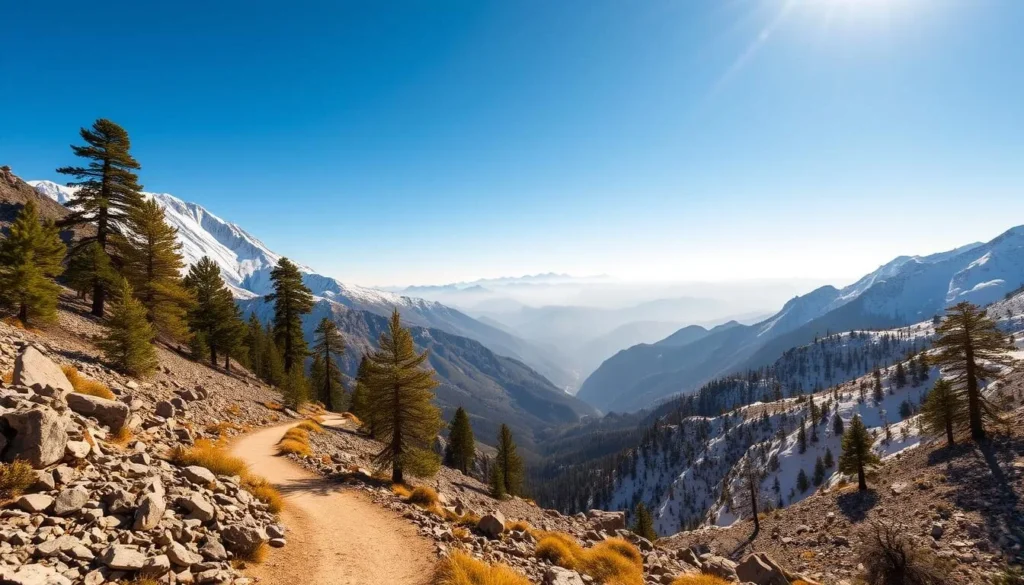
What Makes These Mountains Special
The White Mountains are renowned for the Ancient Bristlecone Pine Forest, which contains some of the oldest living trees on Earth, with ages ranging between 2,000 and 4,500 years. Standing among these ancient bristlecone pine trees, you’ll have a profound experience that connects you with the natural world and its history. The isolation of the White Mountains has preserved their wilderness character over time, offering a serene and contemplative atmosphere.
Ancient Bristlecone Pine Forest
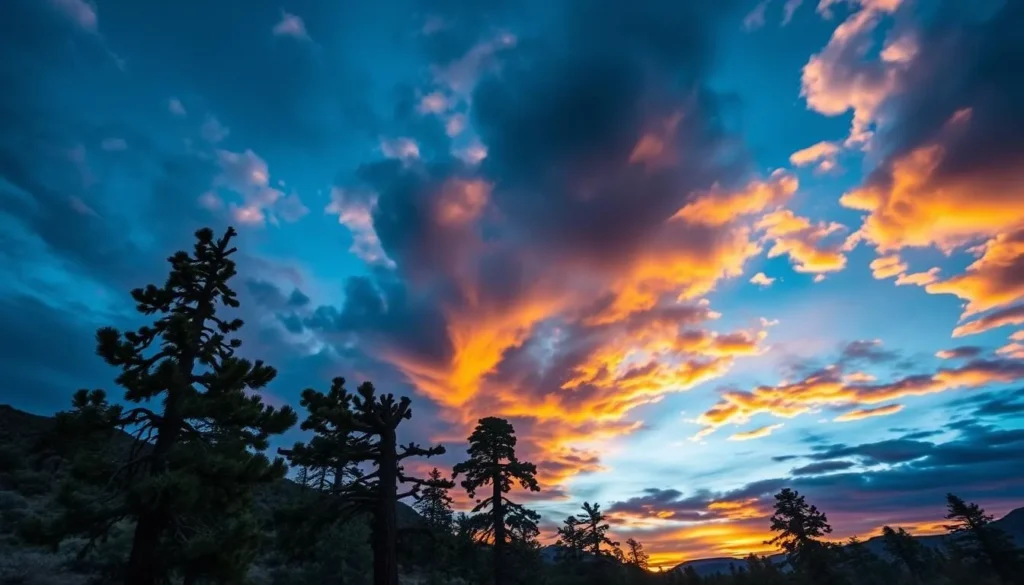
As you explore the White Mountains, a visit to the Ancient Bristlecone Pine Forest is a journey through time, revealing trees that have stood for millennia. This forest is home to some of the oldest living things on Earth, with trees that are over 4,000 years old.
Schulman Grove and Methuselah Trail
The Schulman Grove is one of the most accessible areas of the Ancient Bristlecone Pine Forest, featuring a visitor center and the Methuselah Trail, a photography paradise. The trail is a short loop that takes you through a grove of ancient bristlecones, including the Methuselah tree, one of the oldest living trees.
Patriarch Grove
Further up the road is the Patriarch Grove, another bristlecone grove located at an impressive 12,000 feet (3,600m) elevation. This grove is very stark with little vegetation other than bristlecones, creating a surreal landscape. The trail here is less than 3 miles long, offering panoramic views of the surrounding mountain landscape.
To reach Patriarch Grove, you’ll need to navigate a rough dirt road that extends 12 miles beyond Schulman Grove, a journey that takes over an hour. While 2-wheel drive vehicles can make it with careful driving, high-clearance vehicles are recommended. Be sure to bring warm clothing, as temperatures at this elevation can be significantly cooler than in the valley below.
Hiking Adventures in the White Mountains
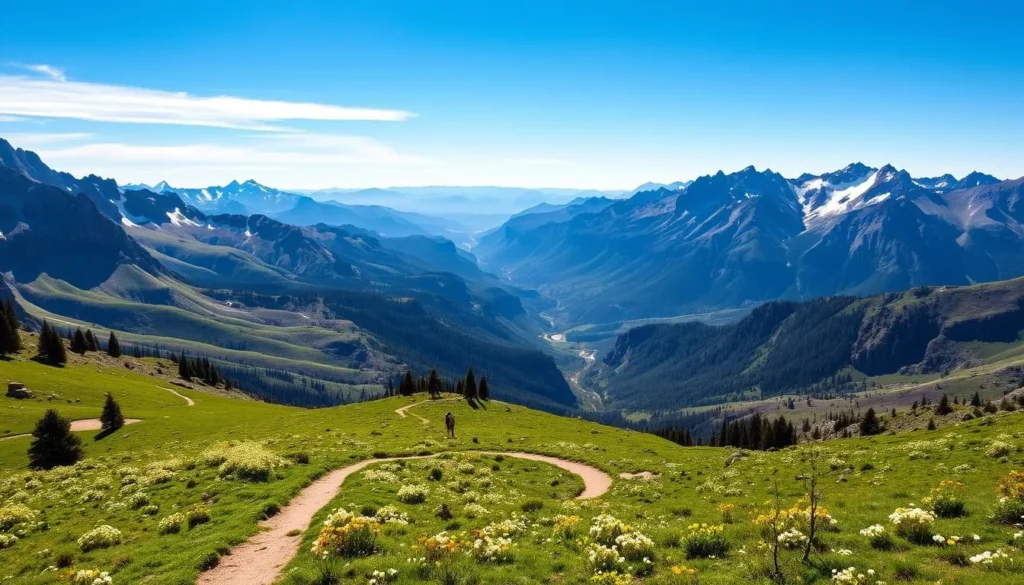
Hiking in the White Mountains is an unforgettable experience, with trails that range from easy day hikes to challenging multi-day backpacking trips. The region’s diverse landscapes and ecosystems offer hikers a unique opportunity to explore California’s natural beauty.
Day Hikes for All Levels
The White Mountains are perfect for day hiking, with several trails that can be completed in half a day. These trails offer breathtaking views and the chance to explore the region’s unique flora and fauna without committing to a longer trek.
Multi-Day Backpacking Routes
For those seeking a more immersive experience, the White Mountains offer several multi-day backpacking routes. The White Mountain Peak route is a popular overnight trip, allowing hikers to summit California’s third-highest peak at 14,252 feet. Other options include the Cottonwood Creek to Crooked Creek route, a challenging 3-4 day trek, and the Birch Creek to Cottonwood Creek loop, suitable for experienced backpackers looking for a 2-3 day adventure.
When planning your trip, remember to obtain the necessary permits and follow regulations for overnight stays in the White Mountain Wilderness. Be prepared for variable water sources and take necessary precautions for food storage in bear country.
Summit White Mountain Peak
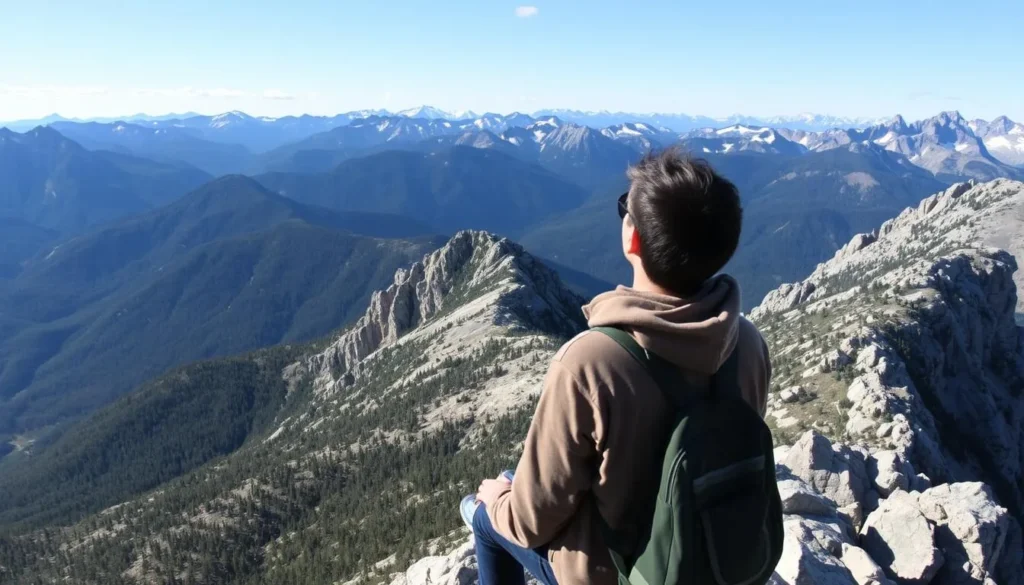
If you’re ready for an epic challenge, White Mountain Peak awaits, offering a thrilling journey to the highest point accessible by mountain bike in the USA. Standing at 14,252 feet, this peak is a must-conquer for adventure seekers.
Trail Description and Difficulty
The trail to White Mountain Peak is a challenging route that demands preparation and physical endurance. The ascent involves navigating through rugged terrain and dealing with high altitude. Hikers should be experienced and equipped to handle the demands of this mountain.
Preparation and Safety Tips
To ensure a safe and successful ascent, several precautions are necessary.
- Acclimatization: Spend at least one night at a moderate elevation (8,000-10,000 feet) before attempting the summit to prevent altitude sickness.
- Essential Gear: Include sturdy hiking boots, layers for changing weather, sun protection, and plenty of water (minimum 3-4 liters per person).
- No Water Sources: There are no water sources along the trail, so plan accordingly.
- Early Start: Begin your hike very early in the morning during summer to avoid thunderstorms.
- Weather Conditions: Be prepared for extreme weather, including sudden storms and high winds.
- Lightning Safety: Be aware of the risks on exposed ridges during thunderstorms.
- Communication: Carry a satellite communication device due to the lack of cell service.
- Altitude Sickness: Know the symptoms and what to do if they occur.
The besttimeto attempt the summit is duringsummerand early fall (July-September) when the road is clear of snow.
Mountain Biking on Scenic Trails

Discover the best mountain biking trails in the White Mountains, California. The White Mountains offer a unique mountain biking experience with challenging terrain and breathtaking views.
Best Biking Routes
The White Mountains have several exciting biking routes. You can ride up to the gate at 12,000ft, and then continue on foot or by bike to White Mountain Peak, the highest peak in the contiguous United States that can be navigated by mountain bike.
Equipment and Safety Recommendations
To ensure a safe and enjoyable ride, use a well-maintained mountain bike with good brakes and appropriate gearing. Wear essential gear like a helmet, gloves, and eye protection. Carry ample water (at least 3-4 liters) and basic repair tools. Be prepared for changing weather conditions and potential altitude sickness.
Photography Opportunities
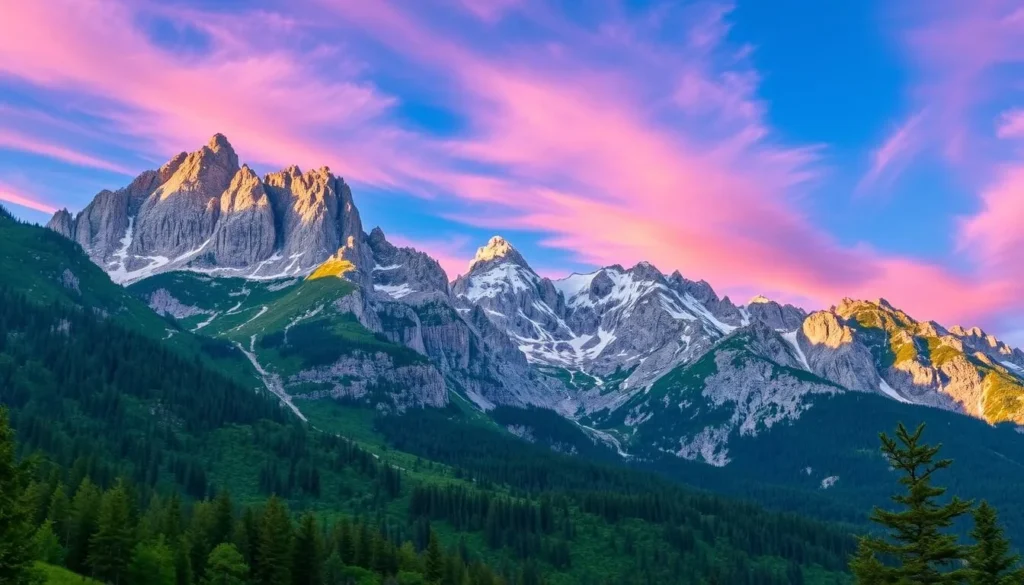
In the White Mountains, you’ll discover a world of photography opportunities that will leave you in awe. With its high elevation and minimal light pollution, this region is a haven for photographers.
Sunrise and Sunset Locations
The White Mountains offer spectacular vistas during sunrise and sunset. Grandview Campground is an ideal location, providing unobstructed views of the surrounding landscape. As the sun rises or sets, the sky is painted with hues of orange and pink, creating a breathtaking photography experience.
Night Sky Photography
The White Mountains are renowned for their incredibly dark skies, making them perfect for night sky photography. At elevations between 10,000-12,000 feet, you’re above much of the atmosphere, resulting in exceptionally clear star visibility. The Milky Way is visible from April to October, with peak viewing during the summer months. For the best results, plan your shoot around the lunar calendar for moonless nights.
4×4 Adventures on White Mountain Road
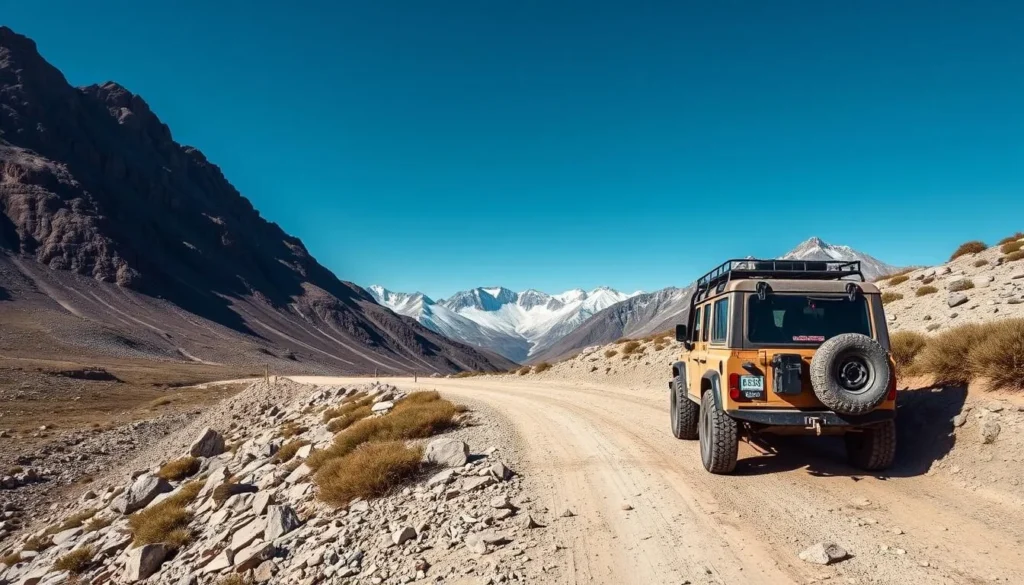
For those seeking adventure, White Mountain Road is a must-drive route that promises an unforgettable 4×4 experience. This road is renowned for its challenging terrain and breathtaking views, making it a favorite among 4×4 enthusiasts.
Road Conditions and Accessibility
The White Mountain Road is paved for the first 10 miles up to the Schulman Grove Visitor Center. Beyond this point, the road becomes a rough dirt path that can be accessed by 2-wheel drive vehicles with caution. However, the road is blocked past 12,000 feet, but hiking and mountain biking are still permitted beyond the gate.
Scenic Stops Along the Way
As you ascend, you’ll encounter numerous scenic viewpoints, including the Owens Valley Vista point, which offers expansive views of the valley floor and the Sierra Nevada range. Other notable stops include the Schulman Grove Visitor Center, County View pullout, Patriarch Grove, and Sierra View point, each providing unique perspectives on the surrounding landscape and historical points of interest.
You’ll experience a dramatic elevation gain and changing ecosystems, from desert scrub to subalpine environments, making the journey as rewarding as the destinations. Be sure to capture the ideal times of day for photography at different stops along the road to enhance your experience and take in the breathtaking views of the mountain landscape, including the Sierra Nevada range and the valley below.
Wildlife Viewing in the White Mountains
As you explore the White Mountains, you’ll have the opportunity to observe a diverse range of wildlife in their natural habitat. The region is home to various species, and with the right knowledge, you can enhance your wildlife viewing experience.
Common Species to Spot
The White Mountains are inhabited by mule deer, bighorn sheep, and numerous bird species. You can spot these animals in various habitats, from the alpine meadows near White Mountain Peak to the areas around water sources.
Best Times and Locations for Wildlife Watching
The best time for wildlife viewing is during early morning and late afternoon when animals are most active. The Crooked Creek Research Station area is a good location for spotting mule deer and various bird species. In summer, the alpine meadows near White Mountain Peak offer potential bighorn sheep sightings. Bringing binoculars can enhance your experience from a respectful distance.
| Species | Best Time | Location |
|---|---|---|
| Mule Deer | Early Morning | Crooked Creek Research Station |
| Bighorn Sheep | Summer | Alpine Meadows near White Mountain Peak |
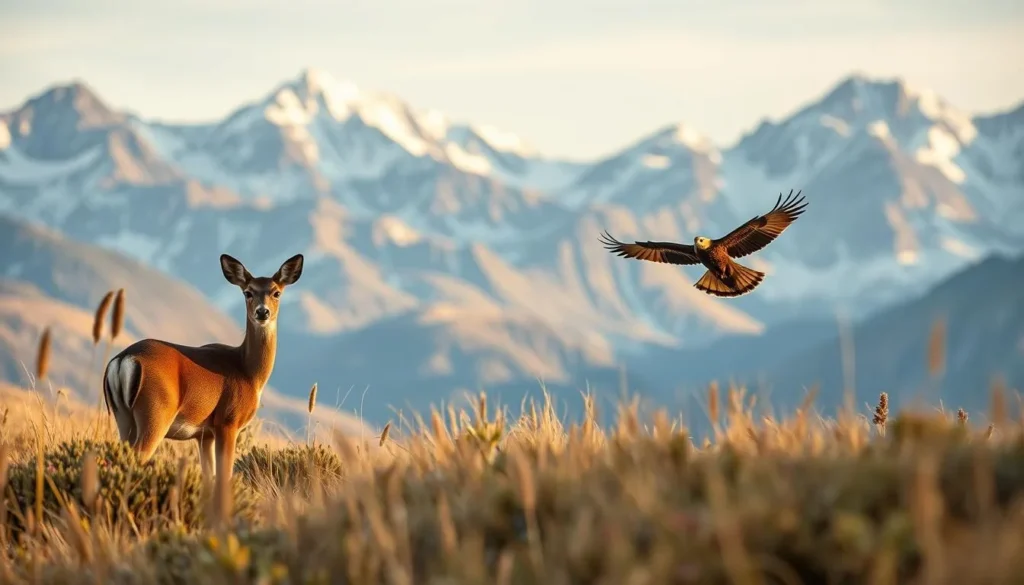
Camping Under the Stars

Experience the tranquility of the White Mountains through camping, surrounded by nature’s splendor. The region offers a unique camping experience with its clear skies and minimal light pollution.
Established Campgrounds
The White Mountains are home to several established campgrounds that offer basic amenities. These campgrounds are usually located in scenic areas with access to hiking trails and other outdoor activities. Visitors can enjoy the beauty of the forest and the majestic views of the surrounding landscape.
Dispersed Camping Options
For those seeking a more secluded camping experience, dispersed camping is available on public lands managed by the Bureau of Land Management (BLM) and the Forest Service. When dispersed camping, it’s essential to follow the “Leave No Trace” principles, camp at least 200 feet from water sources, and be self-sufficient by bringing all necessary supplies. The mountainous terrain offers many secluded spots, especially along White Mountain Road before reaching the Ancient Bristlecone Pine Forest.
White Mountains, California: Best Things to Do in Winter
The White Mountains in winter present a breathtaking yet formidable environment for outdoor enthusiasts. As you venture into this serene landscape, it’s essential to be prepared for the challenges that come with it.
Snow Activities
Winter in the White Mountains offers a range of snow activities, including snowshoeing, cross-country skiing, and ice climbing. The snow-covered terrain provides a unique opportunity to explore the mountains in a different season. You can enjoy the tranquility of the snow-covered forests and the majestic beauty of the frozen lakes.
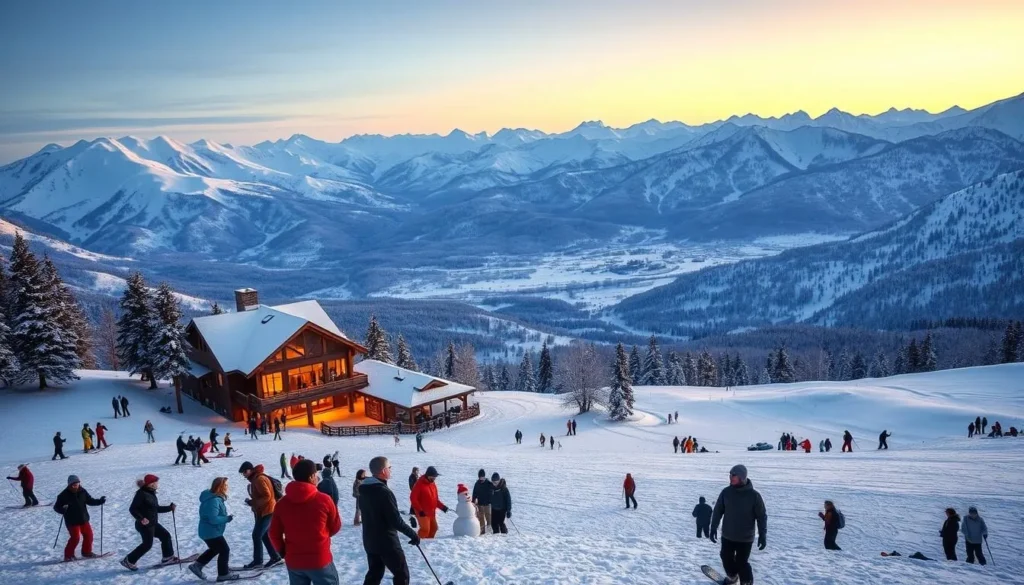
Winter Safety and Preparation
When venturing into the White Mountains during winter, it’s crucial to be well-prepared. You should carry essential winter gear, including a four-season tent, subzero sleeping bag, insulated sleeping pad, and winter clothing layers. Avalanche safety equipment and proper training are also vital when exploring steep terrain. Additionally, be aware of the signs of hypothermia and frostbite, and always check weather forecasts and avalanche conditions before departing.
| Essential Gear | Description |
|---|---|
| Four-season tent | Designed to withstand harsh winter conditions |
| Subzero sleeping bag | Keeps you warm in extremely cold temperatures |
| Avalanche safety equipment | Includes transceiver, probe, and shovel for rescue |
Exploring Nearby Attractions
Beyond the White Mountains lies a region full of diverse landscapes and attractions worth visiting. The area offers a unique blend of natural beauty and historical significance, making it an ideal destination for those seeking adventure and exploration.
Owens Valley
The Owens Valley, formed by the White Mountains and the Sierra Nevadas, is a scenic area with a rich history. This valley is not only a geographical wonder but also a haven for those interested in exploring the great outdoors. Visitors can enjoy various activities and take in the breathtaking views.
Death Valley National Park
Death Valley National Park, located southeast of the White Mountains, is a striking contrast with its low elevations. As the lowest, hottest, and driest national park in the United States, it offers a unique experience with attractions like Badwater Basin, the world’s lowest point at 282 feet below sea level. The park’s fascinating history includes mining ghost towns and stunning geological features, making it a must-visit destination. Visitors can explore the park’s vast landscapes, including sand dunes and salt flats, typically from October to April.
| Attraction | Description |
|---|---|
| Badwater Basin | Lowest point in North America at 282 feet below sea level |
| Zabriskie Point | Panoramic views of the valley |
| Racetrack Playa | Mysterious moving rocks |
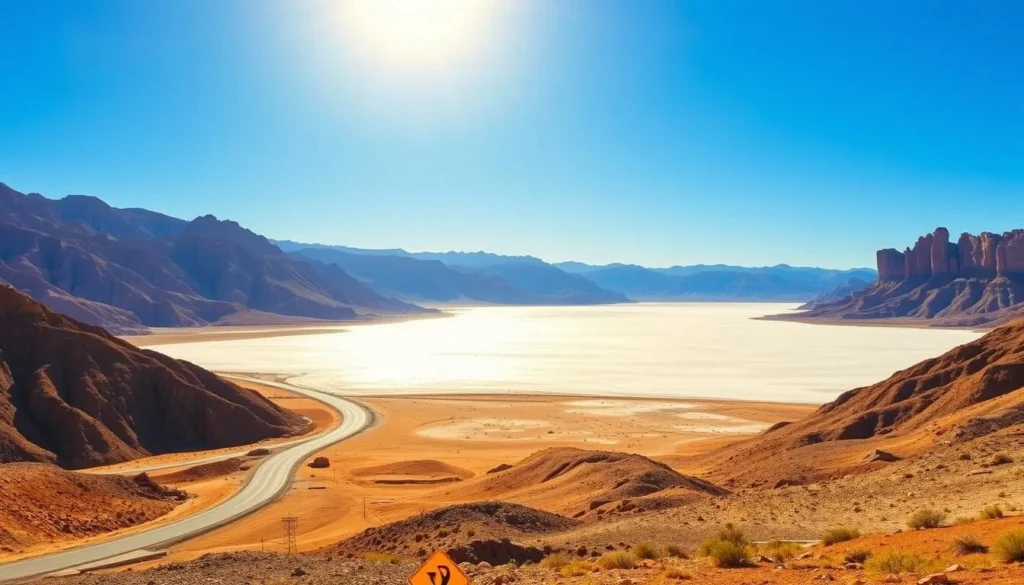
Best Times to Visit the White Mountains
When planning your trip to the White Mountains, understanding the best times to visit is crucial. The region offers a unique experience throughout the year, but certain times are more favorable than others due to weather and other factors.
Seasonal Considerations
The White Mountains are accessible year-round, but the experience varies significantly with the seasons. Summer is the peak tourist season, with warm temperatures in the lower elevations and cool temperatures at higher elevations. In contrast, winters can be harsh, especially at high elevations, making spring and autumn ideal for those who prefer milder weather conditions. Average temperatures vary dramatically with elevation, making it essential to check forecasts for your specific destination within the White Mountains.
Weather Patterns
Weather in the White Mountains can be unpredictable and varies significantly with elevation. It’s not uncommon for the temperature to be 20-30 degrees cooler at 10,000 feet than in Owens Valley. Summer months often see afternoon thunderstorms, making morning the best time for high-elevation activities. The region’s dry conditions mean humidity is often below 20%, and UV radiation is strong at high elevations, necessitating proper sun protection. Visitors should be prepared for rapid weather changes and stronger winds along ridgelines and exposed areas. 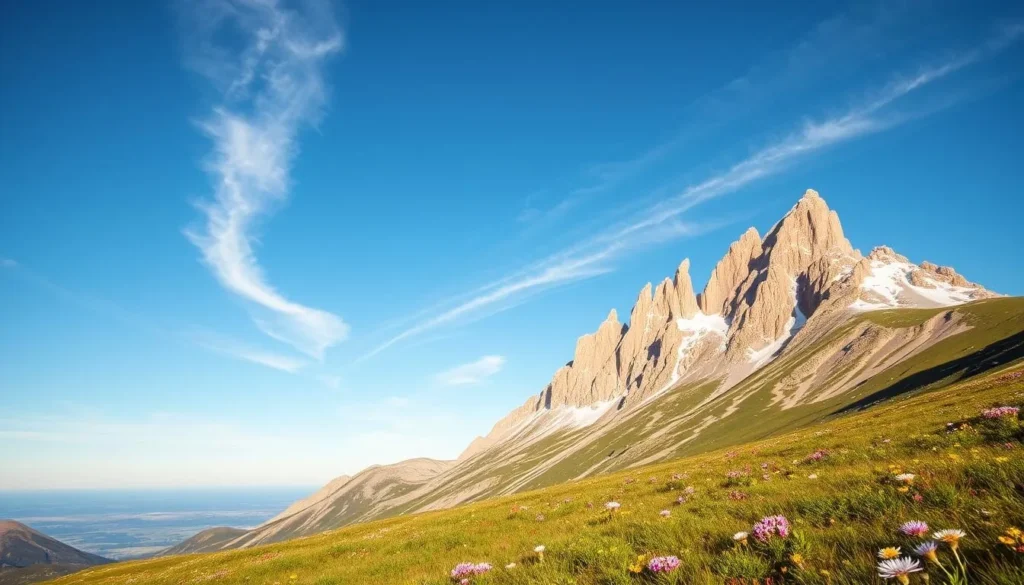
Where to Stay Near the White Mountains
Finding the perfect place to stay near the White Mountains can elevate your entire adventure. You have various options to choose from, depending on your preferences for seclusion and amenities.
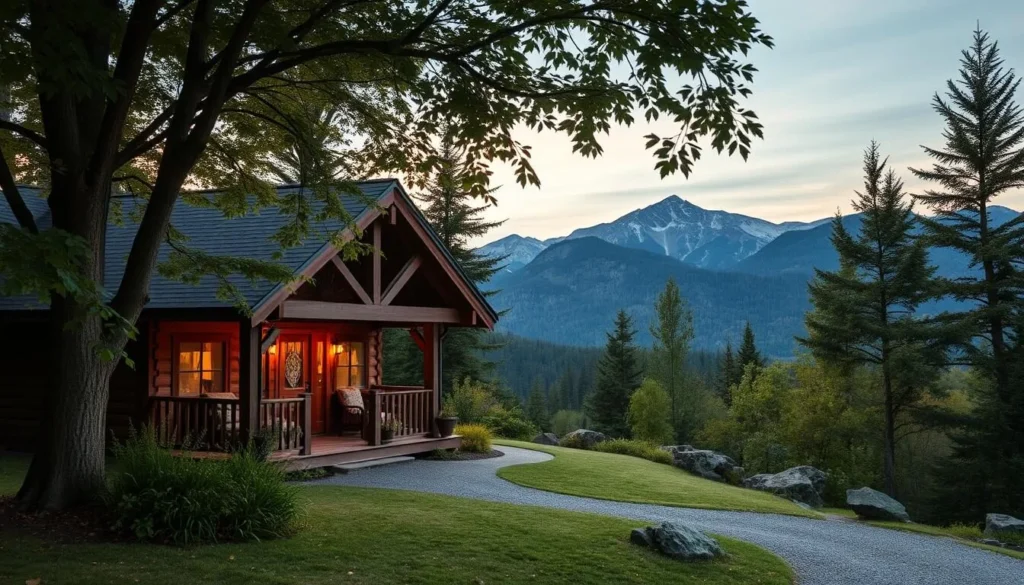
Bishop and Big Pine Lodging
In towns like Bishop and Big Pine, you’ll find a range of lodging options to suit different budgets. These towns offer a convenient base for exploring the White Mountains, with amenities like restaurants and shops within walking distance. You can experience the local culture and hospitality, making your stay even more enjoyable.
Remote Cabins and Retreats
For those seeking a more secluded experience, remote cabins and retreats in the surrounding area offer a tranquil escape. Properties like Rock Creek Lodge and Parchers Resort provide cabin accommodations amidst the beautiful Sierra landscape. Staying at higher elevations can help with acclimatization before exploring the Ancient Bristlecone Pine Forest. You can enjoy the spectacular night skies and wake up surrounded by the natural beauty of the Eastern Sierra mountain region.
Practical Tips for Your White Mountains Adventure
Exploring the White Mountains requires careful planning and preparation to ensure a safe and enjoyable experience. The remote terrain and limited cell phone service make navigation and communication challenging.
Essential Gear and Supplies
To navigate the White Mountains safely, you’ll need to bring the right gear and supplies. This includes a reliable map, a compass, and a satellite communication device like a Garmin InReach or SPOT. Don’t forget to pack enough food, water, and emergency supplies.
- Download offline maps before your trip
- Bring physical maps as backup
- Carry a satellite communication device
Navigation and Communication
Cell phone service is extremely limited or non-existent throughout most of the White Mountains area. To stay safe, let someone know your itinerary and expected return time before heading into remote mountain areas. Use natural landmarks for navigation, and bring a compass and know how to use it.
- Use natural landmarks for navigation
- Bring a compass and know how to use it
- Be aware of GPS device limitations

Conservation and Leave No Trace Principles
To keep the White Mountains pristine for future generations, it’s crucial to apply Leave No Trace principles during your visit. The fragile ecosystem here demands respect and careful planning from visitors.
Protecting the Ancient Forest
The ancient bristlecone pine forest in the White Mountains is a unique and fragile environment. To protect it, visitors must stay on designated trails, avoid damaging trees, and refrain from removing any plants or rocks. This helps preserve the natural habitat and maintains the beauty of the area for future visitors.
- Stay on designated trails to avoid erosion.
- Keep a safe distance from ancient trees.
- Do not remove any natural materials.
Responsible Recreation
Responsible recreation in the White Mountains involves several key practices. Planning ahead and preparing for your trip minimizes your impact on the environment. Proper waste disposal is critical; pack out all trash and leftovers. When having a campfire, use established fire rings and follow local fire restrictions to minimize campfire impacts.
| Practice | Description | Benefit |
|---|---|---|
| Plan Ahead | Research and prepare for your trip. | Reduces impact on the environment. |
| Proper Waste Disposal | Pack out all trash and leftovers. | Keeps the area clean and safe. |
| Minimize Campfire Impacts | Use established fire rings and follow fire restrictions. | Reduces risk of wildfires and environmental damage. |
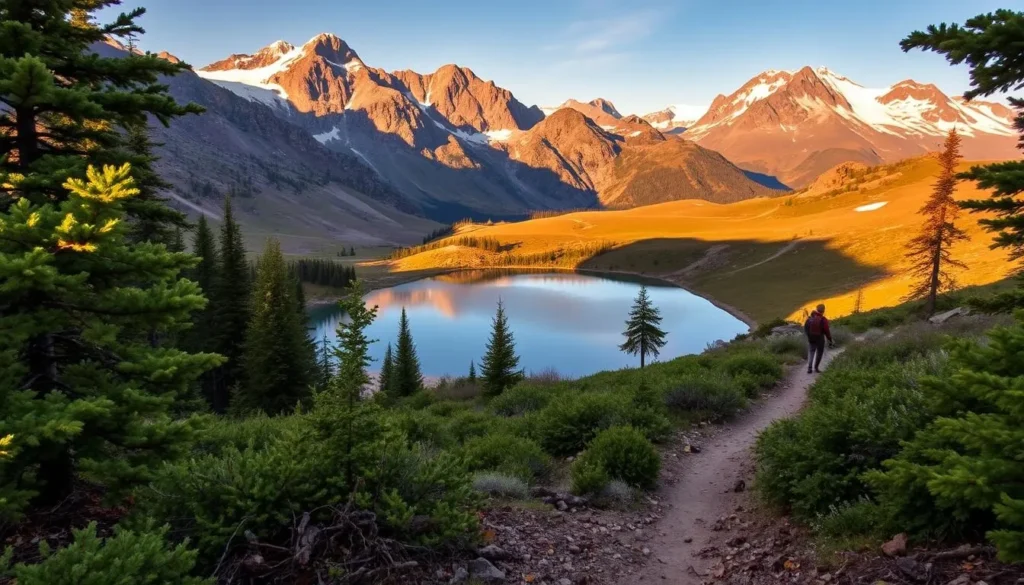
Conclusion
The White Mountains, a lesser-known counterpart to the Sierra Nevada, beckon adventurers to explore their serene landscapes and rich history. As you conclude your journey, you’ll have experienced the unique appeal of this underappreciated natural treasure. From hiking and mountain biking to gazing at the night sky, the top things to do in the White Mountains offer a mix of adventure and solitude. Remember to prepare properly for your visit and take your time to soak in the subtle beauty of this remote wilderness. Standing among the ancient bristlecone pines is a truly perspective-changing experience.
